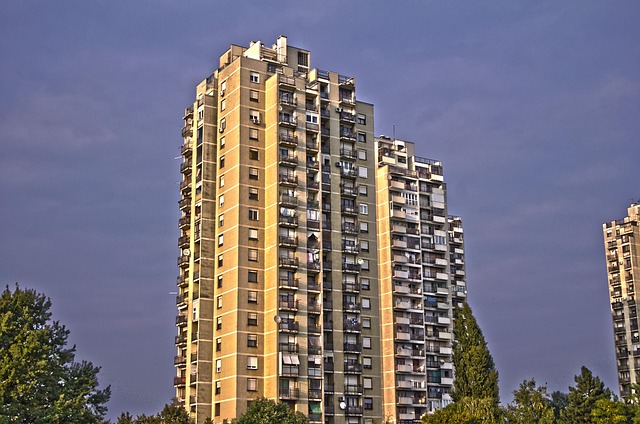The Kembangan Wave Build-To-Order (BTO) project's Price Per Square Foot (PSF) has fluctuated over time, reflecting the broader trends of Singapore's property market since its introduction in 1995. Factors such as economic growth, interest rates, and demographic changes have influenced the PSF, with government cooling measures playing a crucial role in shaping price dynamics. Historical data shows that Kembangan Wave's PSF has generally followed market trends, experiencing upward swings during economic booms and declines during downturns. The area's strategic location, enhanced infrastructure, and proximity to commercial hubs and educational institutions have contributed to its desirability among homebuyers and investors. Real estate prices in Kembangan Wave are sensitive to a range of factors, including economic conditions, demographic shifts, and new property developments. Potential investors should monitor these factors along with government policies and housing market trends to assess the investment potential of Kembangan Wave BTO flats. Understanding the area's historical PSF performance, coupled with an eye on upcoming urban development plans, will provide valuable insights for making informed decisions about investing in this Housing & Development Board (HDB) strategic housing project. Keywords: Kembangan Wave BTO, Price Per Square Foot, Singapore property market, investment potential, economic conditions, demographic shifts, government policies, housing market trends, infrastructure development.
Kembangan Wave’s real estate landscape has witnessed a dynamic trajectory in its Price Per Square Foot (PSF) over the years. This article delves into the intricate evolution of Kembangan Wave BTO PSF, shedding light on historical trends and market dynamics that have shaped its current value. By examining factors such as economic shifts, population growth, and policy changes, we aim to provide a comprehensive analysis of what drives PSF values in this area. For potential buyers, understanding these patterns is crucial for making informed investment decisions. Join us as we navigate the nuances of Kembangan Wave’s property market and offer strategic insights to guide your assessment of its BTO PSF trends.
- Understanding the Evolution of Kembangan Wave BTO Price Per Square Foot (PSF)
- Historical PSF Trends and Market Dynamics in Kembangan Wave
- Factors Influencing the Current and Future PSF Values at Kembangan Wave BTO
- Strategic Insights for Potential Buyers: Assessing Kembangan Wave BTO PSF
Understanding the Evolution of Kembangan Wave BTO Price Per Square Foot (PSF)

The evolution of the Kembangan Wave Build-To-Order (BTO) Price Per Square Foot (PSF) presents an intriguing study within Singapore’s property market. Initially launched in 1995, Kembangan Wave was one of the early BTO projects aimed at providing affordable and quality housing options for first-time homeowners. Over the years, the PSF of Kembangan Wave BTO has undergone significant fluctuations, influenced by macroeconomic factors such as economic growth, interest rate changes, and population dynamics. These fluctuations reflect broader trends in the property market, where demand and supply imbalances, government intervention, and changes in consumer preferences play pivotal roles.
Analyzing the historical data of Kembangan Wave BTO PSF reveals a pattern of growth largely aligned with the overall property market trends in Singapore. During periods of economic expansion and low-interest rates, the PSF of Kembangan Wave witnessed upward trends as demand for housing surged. Conversely, during times of economic downturns or monetary tightening, the PSF experienced a decline or stagnation. Notably, the introduction of various cooling measures by the Singapore government has had a profound impact on the pricing dynamics, with the aim of maintaining a stable and sustainable property market. Investors and homebuyers alike monitor these trends closely, as fluctuations in Kembangan Wave BTO PSF are indicative of the broader market sentiment and potential future developments.
Historical PSF Trends and Market Dynamics in Kembangan Wave

The Kembangan Wave, a residential area situated in the eastern part of Singapore, has witnessed significant fluctuations in Price Per Square Foot (PSF) over the past decades. Historical PSF trends in this district reveal a pattern of growth interspersed with periods of stabilization and occasional retreats. Initially, the PSF in Kembangan Wave experienced a steady increase, driven by the area’s strategic location and the development of infrastructure that enhanced its appeal to homebuyers. This upward trend was bolstered by the region’s transformation into a vibrant community, with improved connectivity and amenities contributing to its desirability.
Market dynamics in Kembangan Wave are influenced by a variety of factors, including economic conditions, population growth, and the availability of real estate projects. The introduction of new developments has had a particularly marked impact on PSF values, with newer properties often commanding higher prices due to their modern facilities and amenities. Additionally, the area’s proximity to key commercial hubs and educational institutions has made it an attractive option for both owners and investors alike. The interplay between supply and demand in Kembangan Wave continues to shape its real estate landscape, with price movements reflecting the evolving preferences of the property market. Keeping abreast of these trends is crucial for anyone looking to understand the nuances of investment opportunities within this district.
Factors Influencing the Current and Future PSF Values at Kembangan Wave BTO

The pricing per square foot (PSF) at Kembangan Wave BTO, a residential project in the vibrant region of Singapore, is influenced by a multitude of factors that are both local and macroeconomic in nature. These factors encompass the prevailing economic climate, population growth trends, government policies, infrastructure developments, and the overall housing market dynamics. The immediate vicinity of Kembangan Wave BTO benefits from strategic location advantages, such as proximity to essential amenities like shopping centers, schools, and transportation networks. This accessibility can drive up demand, thereby positively impacting PSF values. Additionally, the introduction of new MRT lines or upgrades to existing ones within the vicinity can further enhance the attractiveness of the area, potentially leading to an uptick in PSF prices.
Looking ahead, the future trajectory of PSF values at Kembangan Wave BTO will be contingent upon ongoing and planned developments in the region. The government’s housing policies, interest rate fluctuations, and mortgage loan regulations are pivotal in shaping the property market. Any changes in these areas could influence investment sentiment and, consequently, the PSF. Furthermore, the economic outlook, including employment rates and household income growth, plays a critical role. A robust economy with strong job creation and income growth can lead to higher demand for housing, which may push PSF values upward. Conversely, economic headwinds or shifts in demographic patterns could dampen demand, affecting PSF prices. Therefore, stakeholders and potential homeowners should monitor these indicators closely to gauge the potential future value of Kembangan Wave BTO PSFs.
Strategic Insights for Potential Buyers: Assessing Kembangan Wave BTO PSF

In the realm of property investment, understanding the Price Per Square Foot (PSF) is crucial for potential buyers, especially when evaluating the value of Build-To-Order (BTO) flats like those in Kembangan Wave. This development, a strategic housing project by the Housing & Development Board (HDB), offers a blend of convenience and affordability, making it an attractive option for first-time homeowners. Prospective buyers should consider the historical PSF trends of similar projects to gauge the potential growth of their investment. Kembangan Wave’s location, close to amenities such as shopping centers, schools, and public transport nodes, positions it favorably for future price appreciation. The area’s connectivity and the planned upgrades in the vicinity can influence the PSF, thus, it is imperative to stay informed about these developments.
To make a well-informed decision, potential buyers must analyze current market data alongside future development plans. Kembangan Wave’s proximity to key attractions and its position within the broader urban development framework are factors that can influence the PSF. It is advisable to compare Kembangan Wave’s PSF with similar BTO projects in the vicinity to identify market trends and potential for capital appreciation. Additionally, considering the government’s ongoing efforts to improve living conditions and infrastructure, investors should monitor announcements related to the area, as these can significantly impact property values over time. Keeping a close eye on these elements will provide strategic insights for buyers looking to invest in Kembangan Wave BTOs.
In conclusion, the trajectory of the Price Per Square Foot (PSF) for Kembangan Wave Build-To-Order (BTO) flatliners has been a subject of keen interest among stakeholders. This article has shed light on the historical trends and market dynamics that have shaped its PSF values over time, revealing the multifaceted factors at play, from government policies to demographic shifts. Prospective buyers are advised to consider these insights when making their decisions, as the future of Kembangan Wave BTO PSF is poised to be influenced by both ongoing trends and emerging opportunities within the district. With a comprehensive understanding of the area’s growth and the real estate market’s nuances, investors can make informed choices that align with their long-term investment strategies.



